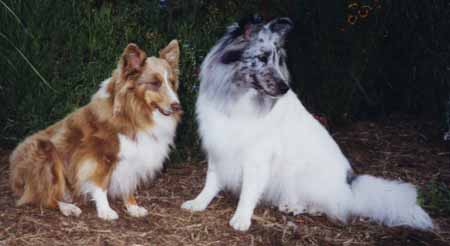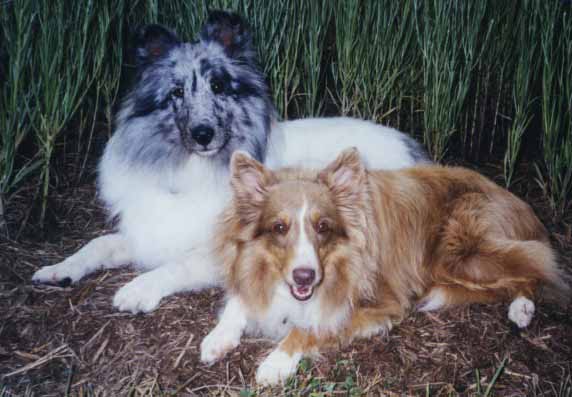Liver, also called chocolate, brown or even red (as in red Dobermanns) is a relatively rare and undesirable gene in the Sheltie gene pool. Livers are normal, healthy pets and can be shown in performance events, but not in the breed ring. Puppies with liver pigment can be produced from almost any color parent. The puppy will simply have any black pigment present (from occasional black-tipped hair on a sable to the entire pigmented part of the coat in a bi-black) diluted to brown. The result is a rather washed-out appearing color, with the nose leather being some shade from brown to pinkish, and often with eye color lighter than normal.
Livers are rare but NOT in the sense of "rare and valuable." They are rare because reputable breeders try to avoid producing the color. A liver companion puppy should certainly not cost more than a companion puppy of any other Sheltie color, and these pups should not even be offered for show or breeding purposes.
The photos show a liver tricolor and a bi-blue headed white. Notice the markings around the eyes of the liver in the first photo.
At first glance, the dog looks like a washed-out sable, but a closer look shows that the body coat is liver with the tan markings typical of a tricolor on the muzzle and over the eyes. There is little contrast between the tan points and the liver body coat. A liver sable or a liver and white with no tan are perfectly possible, as are liver merles (called red merles in Australian Shepherds.) All are faulty colors in the Sheltie breed, as the Sheltie standard calls for a black nose, and by comparing the noses of the two dogs above, it is quite evident that the liver dog has a liver nose rather than a black one.
Eye color may also be lightened by the liver gene, but the variation in eye color among dogs of the same breed is such that it is not normally possible to distinguish livers on this basis alone.
Return to Genetics
index

sbowling@mosquitonet.com
updated March 8, 2010

